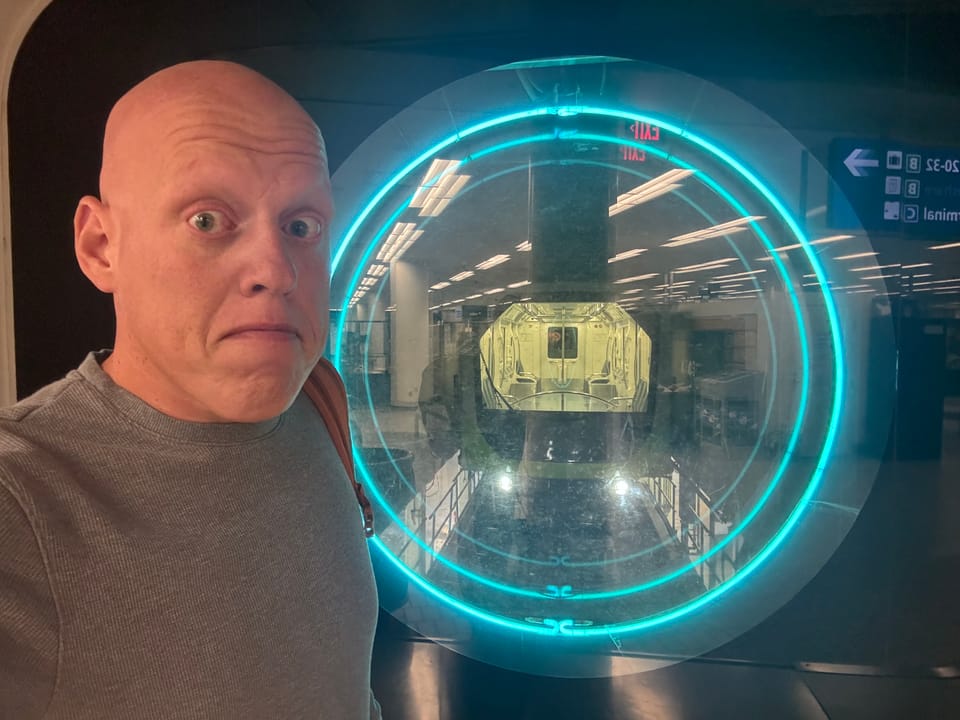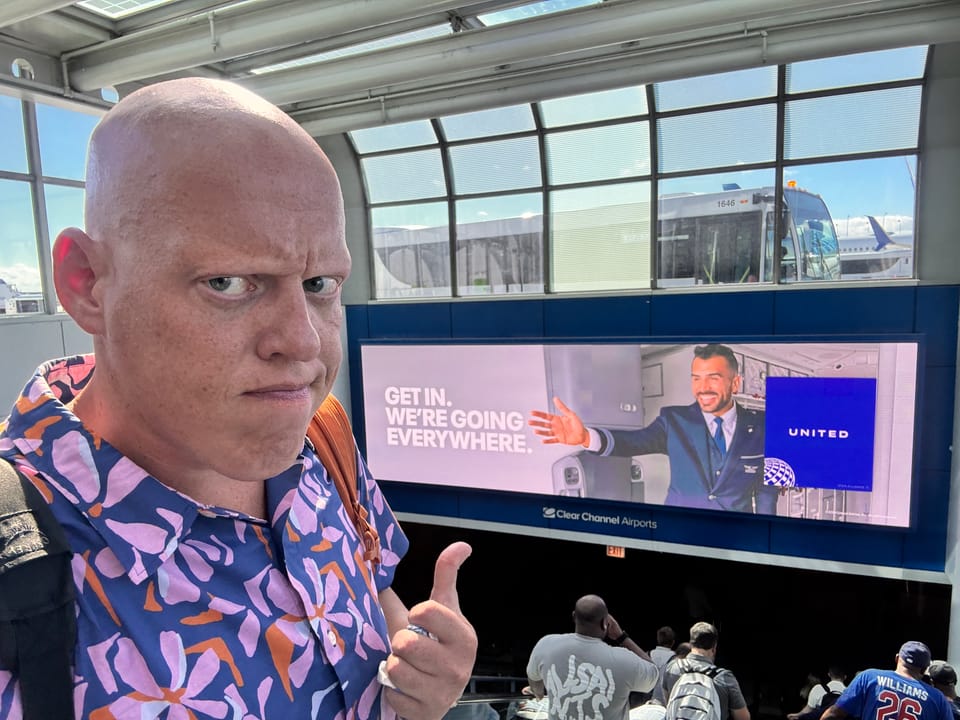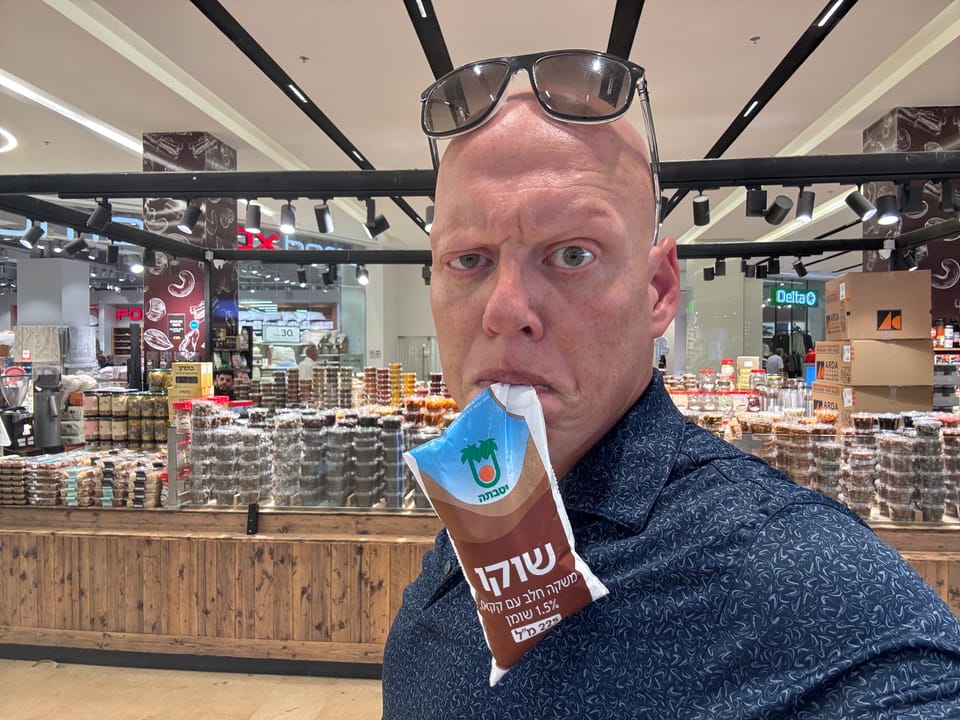Weekend Edition / Dear Ohad...
He never chased status. No Platinum, no upgrades, no shiny tag. But sitting out didn’t save him - it cost him. Turns out, the real loyalty game isn’t about perks or points. It’s about yield. And the smartest move is never picking a side at all.

I’ve never had airline status. Maybe silver on Virgin America (R.I.P). No Platinum, no Gold, not even the one they hand out for downloading the app. I just book whatever’s cheapest, usually through Google Flights. I use the same Bank of America Visa card for everything - office rent, software subscriptions, client dinners.
Honestly, I always assumed I was being practical. But lately, some family relatives, who are business owners, showed me how they fly business class to Europe for free - on the same kind of expenses I’m paying every month.
So, what’s the real play here? Is this just a points hobby for the travel-obsessed, or am I actually leaving money on the table?
-- Aaron, Portland
Dear Aaron,
Here’s the punchline most “loyalty programs” don’t want you to hear:
You don’t need loyalty to win the loyalty game.
In fact, the moment you stop picking sides (airline, hotel, credit card) you start seeing the system for what it really is: a marketplace. Every point, every mile, every transfer partner is just currency, waiting to be priced correctly.
And business owners like you? You’re sitting on more liquidity than you think.
The Silent Losers of the Loyalty Economy
Let’s start with the uncomfortable math.
Since you’re running a small architecture studio in Portland, your overhead probably looks something like this:
- $30K/month in project materials, vendor payments, and software
- $10K/month in travel, client meetings, and professional development
- $5K/month in recurring business expenses (subscriptions, payroll platforms, design tools)
That’s roughly $540,000 in annual spend.
If all of that’s going through a flat 1.5% cashback card, you’re earning $8,100 a year.
Decent, right?
Until you realize what a fully optimized earn-and-burn setup could be worth:
- With transferable currencies, that same spend could yield 500,000-800,000 points, depending on category multipliers.
- Redeemed strategically (through partner programs, timing, and bonuses), those points can deliver 10-15% real-world ROI.
That’s $50,000-$75,000 of value ... the difference between a design conference in Atlanta and a business-class research trip through Copenhagen and Tokyo.
You’re not losing money by avoiding status.
You’re losing yield by sitting out the strategy.
The Illusion of “Free” Loyalty
Airlines built their empires on emotion.
They made you believe that loyalty was rational - when it was really engineered to be predictable.
Every “mile multiplier” or “double elite credit” was designed to steer behavior, not reward it. It’s why they love status chasers and shrug at freelancers. Status keeps you in the cage, feeding the ecosystem.
But here’s where your detachment becomes your edge:
You don’t owe any of them your allegiance.
That means you can go where the math works.
When Delta devalues, you move to Virgin Atlantic.
When Hyatt caps redemptions, you shift to Marriott through a transfer bonus.
When Amex runs a 30% boost to Singapore KrisFlyer, you take it - and fly Suites for the price of someone else’s Premium Economy.
That’s not loyalty. That’s arbitrage.
Earn Like an Investor, Burn Like a Trader
You don’t need to think like a traveler. You need to think like an investor.
The same logic that governs your architecture projects (efficiency, resource allocation, yield) applies perfectly to points.
Step 1: Build a diversified earning structure.
Your spend categories are already mapped. You just need to channel them through the right cards. Here's a Vanilla Strategy for you:
- 4x or 5x points on advertising, dining, or travel (Amex Business Gold or Chase Ink Preferred)
- 2x on general business purchases (Capital One Venture)
- 1.5x floor on everything else
This structure turns every project into a points engine.
Step 2: Treat points like a balance sheet.
Track your earnings the way you’d track accounts receivable. Don’t hoard points - they devalue faster than currencies in emerging markets.
The goal isn’t to collect; it’s to convert.
Step 3: Burn efficiently.
That’s where most people fail. Points have a spread - the difference between what the issuer thinks they’re worth and what they can actually buy.
Cash them out through low-value portals, and you’re earning 1–2%.
Redeem through partner awards, and you’re earning 10%+.
That’s the arbitrage window UpNonStop lives in.
The “No Loyalty” Advantage
Here’s the irony, Aaron: the fact that you never picked a side means you’re free to build your own system from scratch.
Every big loyalty player (Amex, Chase, Capital One, Citi) wants your spend.
They’ll compete for it with welcome bonuses, category multipliers, and temporary transfer boosts.
And you can move between them without penalty, because you’re not emotionally tied to a single airline’s version of “value.”
Let’s visualize it:
| Source | Currency | Average ROI (on spend) | Flexibility | Ideal Use Case |
|---|---|---|---|---|
| Amex Business Gold | Membership Rewards | 8–12% | High | Airline transfer partners, luxury hotels |
| Chase Ink Preferred | Ultimate Rewards | 6–10% | High | Hybrid redemptions, travel portal top-ups |
| Capital One Venture X | Miles | 5–8% | Moderate | Fixed value travel + partner arbitrage |
| Citi Strata Premier | ThankYou Points | 5–9% | Moderate | Partner transfers, Asia-based redemptions |
No status. No drama. Just math.
Why “Cheap Flights” Cost You More Than You Think
When you book the cheapest flight, you’re winning the wrong game.
Because the $50 you save upfront might cost you thousands in downstream yield.
If a single trip to San Francisco generates 5,000 points through the right card and that trip cost you $300, you’re effectively earning a 16% return.
If you paid with cash on a 1.5% card, that return drops below 2%.
That’s not a loyalty lesson - it’s a financial one.
And it’s why status-free business owners who start optimizing spend end up out-earning those still chasing upgrades.
From Practical to Profitable
Here’s what your next six months could look like:
- January: Switch your general spend to a transferable points card.
- February: Use a second card optimized for ad spend or travel.
- March: Begin tracking your earn/burn ratio (UpNonStop automates this).
- April: Redeem your first flight or hotel through a partner program - not a portal.
- May: Stack a 25%–30% transfer bonus to multiply your yield.
- June: Reinvest your savings into another business trip that earns even more.
You’ll have turned passive spend into a self-reinforcing rewards cycle.
That’s what most “status chasers” never figure out - they’re earning for access. You’re earning for outcome.
The Final Draft
So Aaron, here’s my truth:
Loyalty programs are designed to keep you comfortable, not profitable.
You were never behind for not joining one. You were just waiting for the right framework.
And once you treat every transaction as a strategic asset (not a swipe) you’ll realize you don’t need to chase recognition to fly like the elite.
Because the real status symbol in 2025 isn’t a shiny tag or a lounge pass.
It’s yield - the kind you can actually measure, track, and redeem.
Until next week: may your invoices earn 5x, your redemptions be outsized, and your points portfolio outperform every loyalty program you never joined.
-- Ohad




